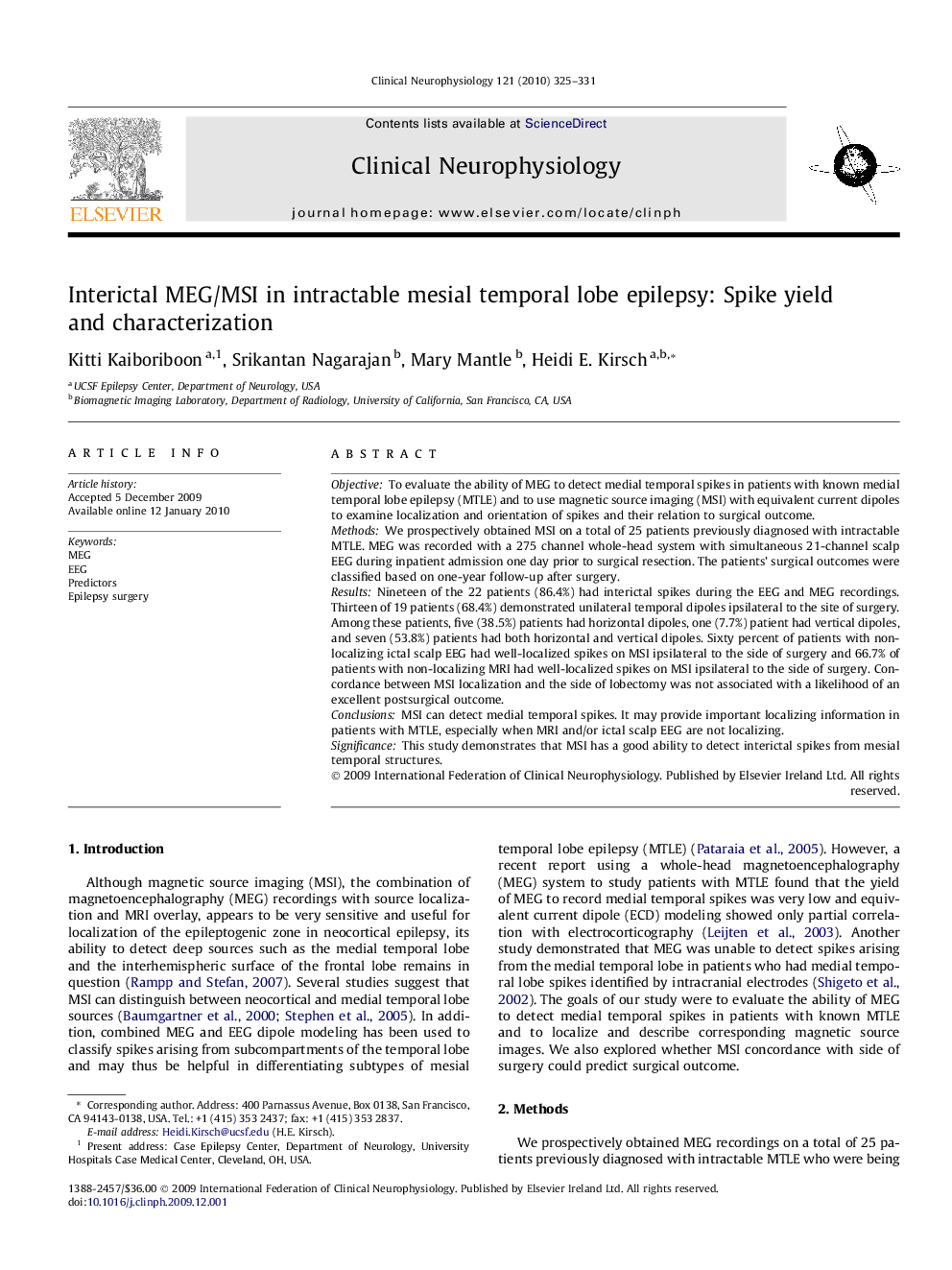| Article ID | Journal | Published Year | Pages | File Type |
|---|---|---|---|---|
| 3045147 | Clinical Neurophysiology | 2010 | 7 Pages |
ObjectiveTo evaluate the ability of MEG to detect medial temporal spikes in patients with known medial temporal lobe epilepsy (MTLE) and to use magnetic source imaging (MSI) with equivalent current dipoles to examine localization and orientation of spikes and their relation to surgical outcome.MethodsWe prospectively obtained MSI on a total of 25 patients previously diagnosed with intractable MTLE. MEG was recorded with a 275 channel whole-head system with simultaneous 21-channel scalp EEG during inpatient admission one day prior to surgical resection. The patients’ surgical outcomes were classified based on one-year follow-up after surgery.ResultsNineteen of the 22 patients (86.4%) had interictal spikes during the EEG and MEG recordings. Thirteen of 19 patients (68.4%) demonstrated unilateral temporal dipoles ipsilateral to the site of surgery. Among these patients, five (38.5%) patients had horizontal dipoles, one (7.7%) patient had vertical dipoles, and seven (53.8%) patients had both horizontal and vertical dipoles. Sixty percent of patients with non-localizing ictal scalp EEG had well-localized spikes on MSI ipsilateral to the side of surgery and 66.7% of patients with non-localizing MRI had well-localized spikes on MSI ipsilateral to the side of surgery. Concordance between MSI localization and the side of lobectomy was not associated with a likelihood of an excellent postsurgical outcome.ConclusionsMSI can detect medial temporal spikes. It may provide important localizing information in patients with MTLE, especially when MRI and/or ictal scalp EEG are not localizing.SignificanceThis study demonstrates that MSI has a good ability to detect interictal spikes from mesial temporal structures.
